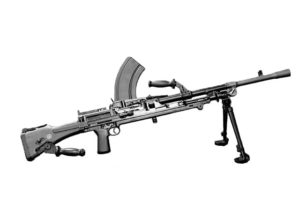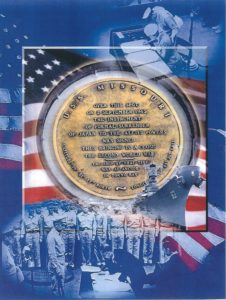An eye-witness account by Gerrit Vermeulen, a young Dutch soldier from Renswoude
In his own words:
Nevasa, Semarang, March 28, 1946
This morning at 7:00 a.m. we anchor outside the harbor of Semarang. Part of the T Brigade disembarks on a landings craft. Around 2:30 p.m. we weigh anchor again and tomorrow afternoon we are scheduled to arrive in Soerabaja. The food we get here on board is ok, but it is so boring. It’s the same every day: cold, canned food, called emergency rations. For 6 people we get one box every day. In the box are fish, corned beef, meat and kidney pudding, cake, peas or carrots, pudding you can slice, rolled oats (which we can’t do anything with because we can’t cook), powdered milk, bacon, potatoes, sugar, matches, mepacrine tablets (against malaria), vitamin tablets, tea, chocolate, candy, cigarettes, salt and salt tablets and biscuits. All good quality, but we’d rather have a good meal. The salt tablets are not to add salt to your food but to just swallow, to replace the salt we lose through excessive perspiration because of the tropical temperatures; the salt we need to prevent cramps. I manage to get one of the few available hammocks to sleep in, hooked on the ceiling in the hold; it’s better than a place on deck, but it’s difficult to turn over.
I’m thinking about the imminent future: a dangerous time lies ahead, perhaps on the battlefield. I am not afraid of battle. In case I should die I know that my Redeemer lives! He fought the ultimate battle for me.
Nevasa, March 29, 1946
The native crew always walk barefoot. The British soldiers on board have shoes and uniforms like us. They are less stocky than the Dutch, but not as slender as the natives in Malaysia. They don’t use spoon and fork to eat, they mold the rice into a ball, dip it into the gravy and put it in their mouth. Some natives have long hair, down to their waist. They wear it in a bun on the very top of their heads and look like women from the back, until you see their full black beards and mustaches in the front!
Soerabaja, March 30, 1946
We embark at 7 a.m. and arrive in camp at 8:30 a.m. At 3 p.m. we are back in service. Glad to have escaped the muddy camp at Chaah airfield; glad to get off the dirty ship. But although Chaah was bad and the ship was worse, the camp is worst of all. I’d better not write about that any more. In the distance we hear gunshots again, the first after April 1945. But we don’t hear the screeching and hits of artillery shells – we’re too far away.
Soerabaja, March 31, 1946
Soerabaja seems to be safe, yet we are not allowed to into town unless we go with four or more and are heavily armed. We want to go to church this morning but can’t find the church in time, so we walk through town and are back home at 11:30 a.m.
Soerabaja, April 3, 1946
We started packing up yesterday and arrive in our new camp, a ways out of town. The barracks are in reasonably good condition, but the water supply, lighting and toilets are out of order.
The first night seems to last forever. We set out guard posts that change every two hours. Suddenly I hear gun shots. Immediately thereafter a bren rattles. I grab my loaded revolver and quickly load my gun. It is pitch dark outside and I can’t see anything through the window and door openings. There are no windows and doors in the building so I don’t have to open anything to look out. A few more shots are fired. Then silence. Later in the night we hear a few more shots while we are dozing. But in the morning we hear that one of our comrades in our battalion was shot through the middle of his head and died instantly. None of the attacking extremists has been killed or captured. “Were we actually attacked by extremists?” one man asks.
“Yes”, someone says.
“No”, someone else says, “we shot at each other.”
We need to set rules: Don’t shoot unless you are absolutely sure you are facing an enemy and are sure you can hit him.
Soerabaja, April 4, 1946
The second night in the barracks has passed. It lasted even longer and was more terrible than the first night. In one of the Psalms David says: My soul longs for God like a guard longs for the morning. I have stood guard before, in Holland, in England, in Malaysia. But not until now do I know how badly a guard can long for the morning. Here we feel the breaking of the dawn as a relief, a liberation.
We sleep here on hard boards, but are getting used to that. After 7:30 p.m. all lights have to be out and nobody except for the guard may go outside. We all go to bed early. I have no guard duty tonight. Suddenly, around 11:30 p.m., without any preceding shots whatsoever, fire from several automatic weapons very close by me rattles loudly and jolts me awake. I am suddenly scared to death. I jump up, grabbing my revolver and my gun. But what can we do here? Through the window and door openings we can’t see anything in the dark night except the flashes of firearms. Is there a friend or an enemy where we see the light? Should we fire in that direction or not? If we go there with our password the enemy will know immediately who we are. If we creep in that direction our comrades can take us for an enemy and shoot us down.
Slowly the firing gets less frequent, then stops. A moment later someone asks for bandages and a gurney. Through our building, passing me, five men are carried away. We are ordered to stay in our building. But to know that, so close by, our comrades are involved in a terrible fire fight, and having to helplessly stand by is almost as unbearable as being involved in a fight ourselves. We hear a few more shots and fire from an automatic weapon that night and can’t quite find the peace to go back to sleep.
The following morning we hear what has happened. The extremists, trained snipers, crept unseen through the posts of our camp until they were about thirty feet from the guard room, a building completely open on one side, where guards who were off duty rested in total darkness. They fired their automatic weapons, killing our Platoon’s Commander Lieutenant v.d.Werf and one other man, injured seven others, among which one critically, and three who will be invalids for the rest of their lives.
Today we are building scaffolds, making barbed wire barriers, installing booby traps and trip floors, leveling terrain, and so on. We have to stop things like the ones that happened in the past nights immediately.
This night is better. One man gets injured by accident. But several things are desperately bad. Food does not taste good, the kitchen is a stinky mess, there is no hot water to wash the mess kits; who does not get shot by the enemy could get sick of the filth: hygiene in the tropics!
Stay tuned!
I welcome your comments
Until next time,
Ronny


